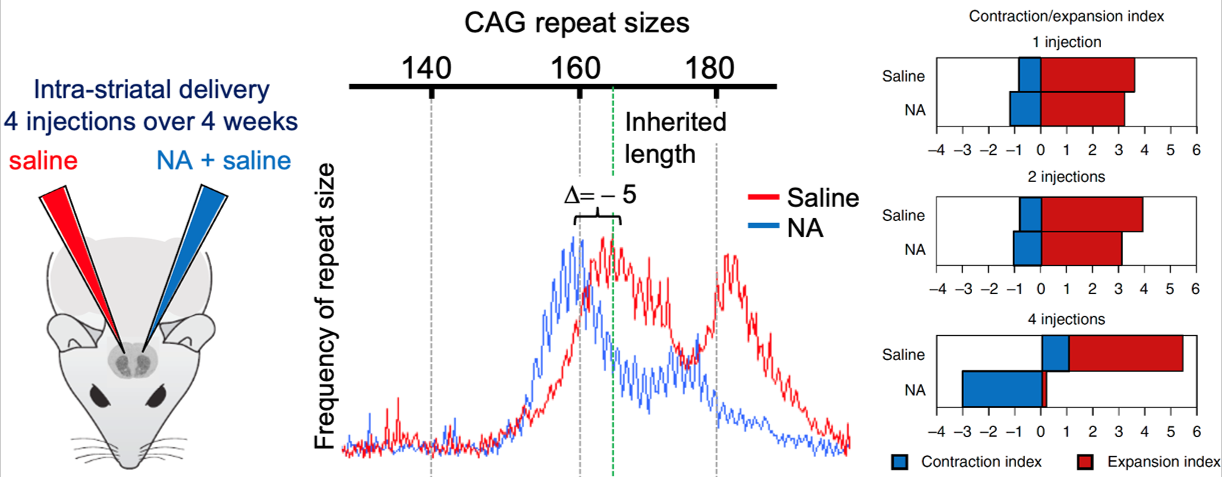Tech #1123: A new treatment approach for DNA repeat expansion diseases
Genetic expansions of repeat sequences drive over 70 neurodegenerative diseases, and targeting DNA repair proteins or slipped-DNAs could slow or reverse disease progression. The Pearson Lab developed a platform to discover small molecules that contract these repeats, offering potential treatments for conditions like Huntington’s disease, ALS, and dementia.
IP&C is seeking investors to launch a start-up company.
Technology Reference Number
#1061
Inventors
IP&C Contact
Publications
Patents
Patent Method of Treating diseases associated with Repeat Instability issued in US 20210283114 on 13-06-2023, Japan JP 2019524160 A on 05-11-2023, EP 3496713 A1 on 13-03-2024, CA 3033590 A1 pending in Canada.
Category
Therapeutics
Keywords
Repeat expansions, Neurodegenerative diseases, DNA repair targeting, Small-molecule therapeutics, CAG tract contraction
Background
Genetic expansions of repeat sequences, like CAG tracts, in certain genes have been linked to at least 74 neurodegenerative, neurological, and neuromuscular diseases, including Huntington’s disease (HD), various spinocerebellar ataxias (SCAs), myotonic dystrophy (DM1), amyotrophic lateral sclerosis (ALS), and frontotemporal dementia (FTD). The inherited repeat expansion continues to somatically expand in affected tissues as the individual ages, resulting in earlier age of disease onset, increased disease progression and severity. Decreasing the number of repeats could delay disease onset by years, and arresting or reversing somatic CAG/CTG expansions could be used to arrest or even reverse disease onset, progression, and severity.

Figure 1.
DNA repair proteins drive or suppress repeat expansions by aberrant processing of slipped-DNAs, which drive or suppress disease onset, progression and severity. Targeting DNA repair proteins will slow or arrest expansions. Targeting mutation-specific slipped-DNAs with Naphthyridine-Azaquinolone (NA) can rapidly and specifically induce contractions to less than the inherited repeat length, rapidly leading to clinical benefit.
Invention Description
The Pearson Lab has developed a platform to discover chemical matter (small-molecules) specific to CAG and other repeat diseases. Indications include various CAG expansion diseases (HD, SCAs, and DM1, ALS, and FTD).
Commercial Applications
Inducing contractions of expanded repeats can be a transformative therapy for individuals with a range of neurodegenerative conditions, for which there is currently no disease-modifying treatment. Unlike competing approaches, targeting disease-specific slipped-DNAs induces contractions with an efficacy that suits the rapid timeline of a clinical trial.
Developmental Stage
Preclinical in vitro and in vivo data in disease-specific brain regions with phenotypic, pathological and biomarker improvement are promising. Next steps include medicinal chemistry, pharmacokinetic, animal efficacy, and toxicology studies.


